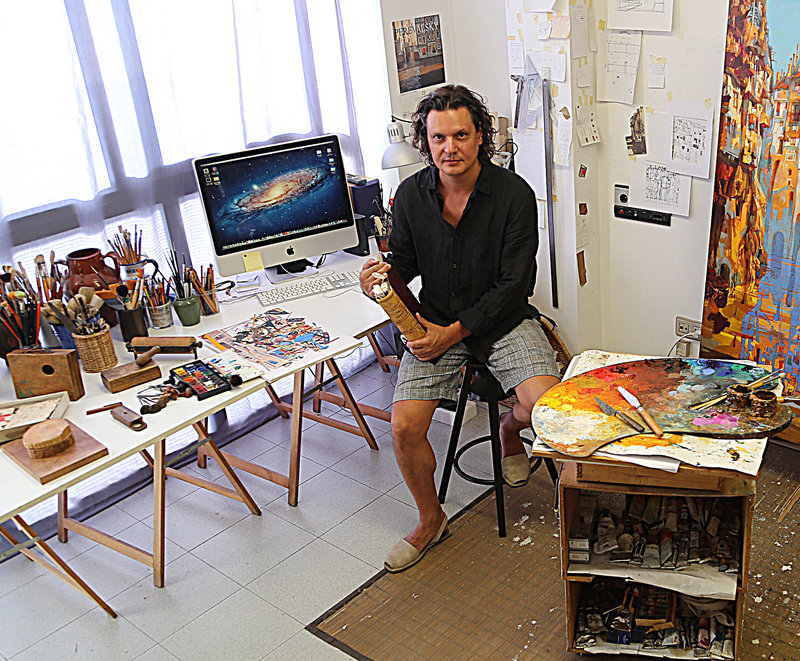Painter
Girona. www.perevalsky.com
Evdokim Perevalsky
Born in Ukraine, artist Evdokim Perevalsky moved to Catalonia in 1997 and currently combines his activity as an artist with teaching painting and drawing at the Escola Municipal d’Art in Celrà. He has participated in many local and international art exhibitions and festivals. We joined him in his studio and learned about the tools he needs in his creations.
1. Palette. This is the real basis for everything. It’s where the paintings are born, here I find the harmony between the colours. This one is special: it came with me all the way from Ukraine more than 20 years ago.
2. Spatula: This is the tool for mixing the colours on the palette, and to paint. This one is also special, it was given to me by an artist friend of my father’s who studied art in Paris before the Russian Revolution in 1917 and was made by hand. It’s kind of a relic and reminds me of where I come from.
3. Watercolours: This particular box also came with me from Ukraine. It’s the type I used when I was a student at the Kiev School of Fine Arts , and I still recommend it to my students, due to its high quality. Watercolours are very versatile and great for travelling.
4. Paintbox: This belonged to my father, who used it when he studied fine arts and he, in turn, inherited it from his painter friend. Like the other objects, it’s a piece that has been passed from the hands of one artist to another; I used it as a child when I was in the fields around my grandmother’s village. I still use it to do my studies and notes about colour wherever I go.
5. Engraver’s chisels: I graduated as an engraver in Fine Arts, and I’ve devoted much of my career to creating using different engraving techniques. These burins are ancient, inheritances from different Ukrainian artists, made by hand by artisans.
6. Whetting stone: This was made by my father and is excellent for sharpening the chisel. In itself it is a work of art and an important piece in the studio.
7. Blocks for wood-carving: The technique of xylography is a very old tradition and one which I’ve also worked on. It involves either carving directly on wood or creating printing blocks, mostly using the wood from cherry and pear trees.
8. Box with papers and clock-maker’s tools: My father-in-law was a clockmaker, and in his workshop there were various materials for repairing all types of clocks. I have kept them because of their sentimental value.
9. Cuttings for collages: recently I’ve become very interested in collages and for my designs I’ve collected cuttings from all sorts of printed paper I find interesting and attractive aesthetically
10. Die Kunst. Framed excerpts from the famous German magazine Die Kunst. Wonderful inspiration of artwork from the past two centuries. Another treasure I brought with me from Kiev.

